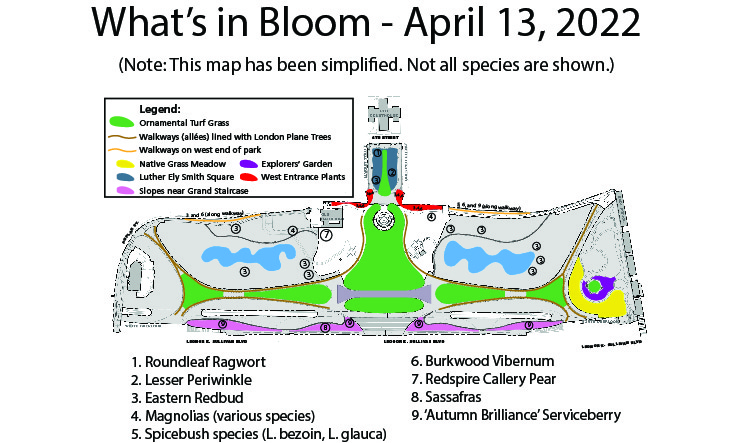
1. Roundleaf Ragwort, Packera Obovata. Currently blooming in Smith Square.
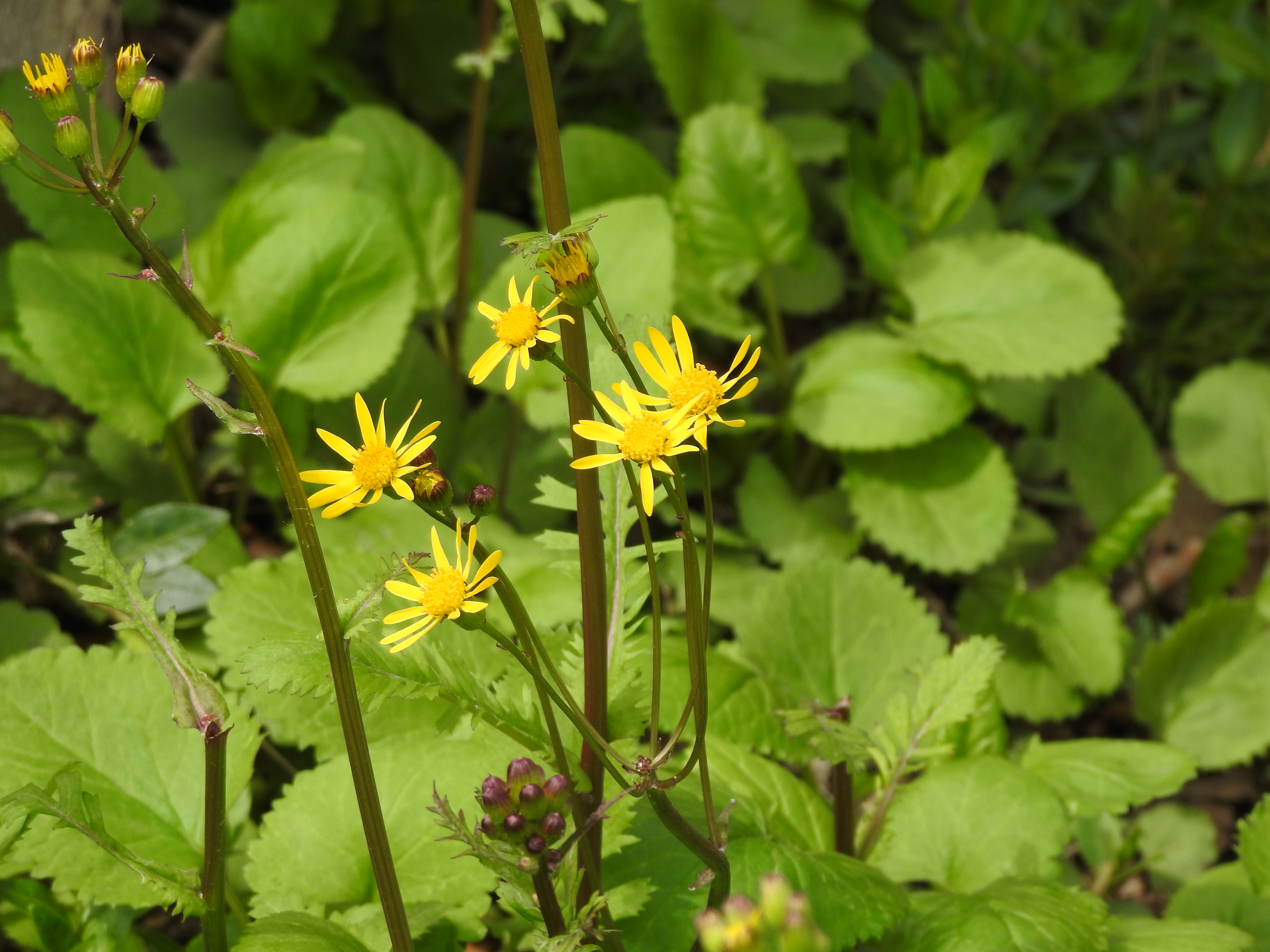
Photo: A Prosser, NPS
These lovely little flowers look like bunches of daisies in a premade bouquet. The flowers all join together to a central stem a few inches below the flower. The species is native to eastern North America and is one of spring’s earliest native bloomers. Many bees, flies, and beetles utilize it. Interestingly, although it is so useful to our native insects, it is mildly toxic to many herbivorous mammals, including rabbits. Rabbits do occasionally nibble on the leaves and flowers (perhaps out of curiosity) but they quickly learn to stay away. Due to the species’ inherent bunny protection, its hardiness, and its draught resistance, this species is a good choice for rain gardens.
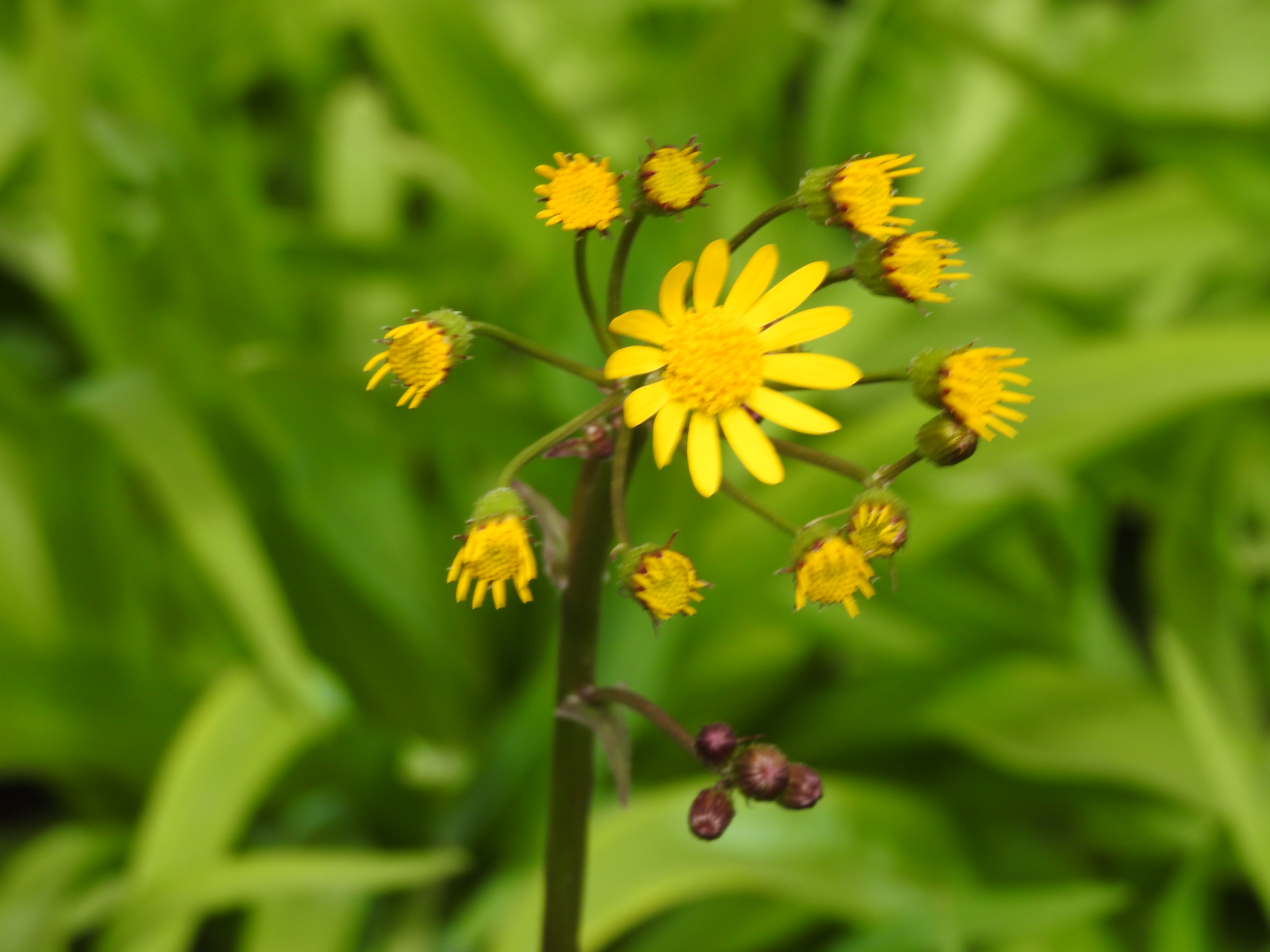
NPS Photo.
After the flowers finish blooming, the seed heads will turn fluffy and white, which allows them to remain pretty for a few more weeks.
2. Lesser Periwinkle, Vinca minor. Blooming in Smith Square.
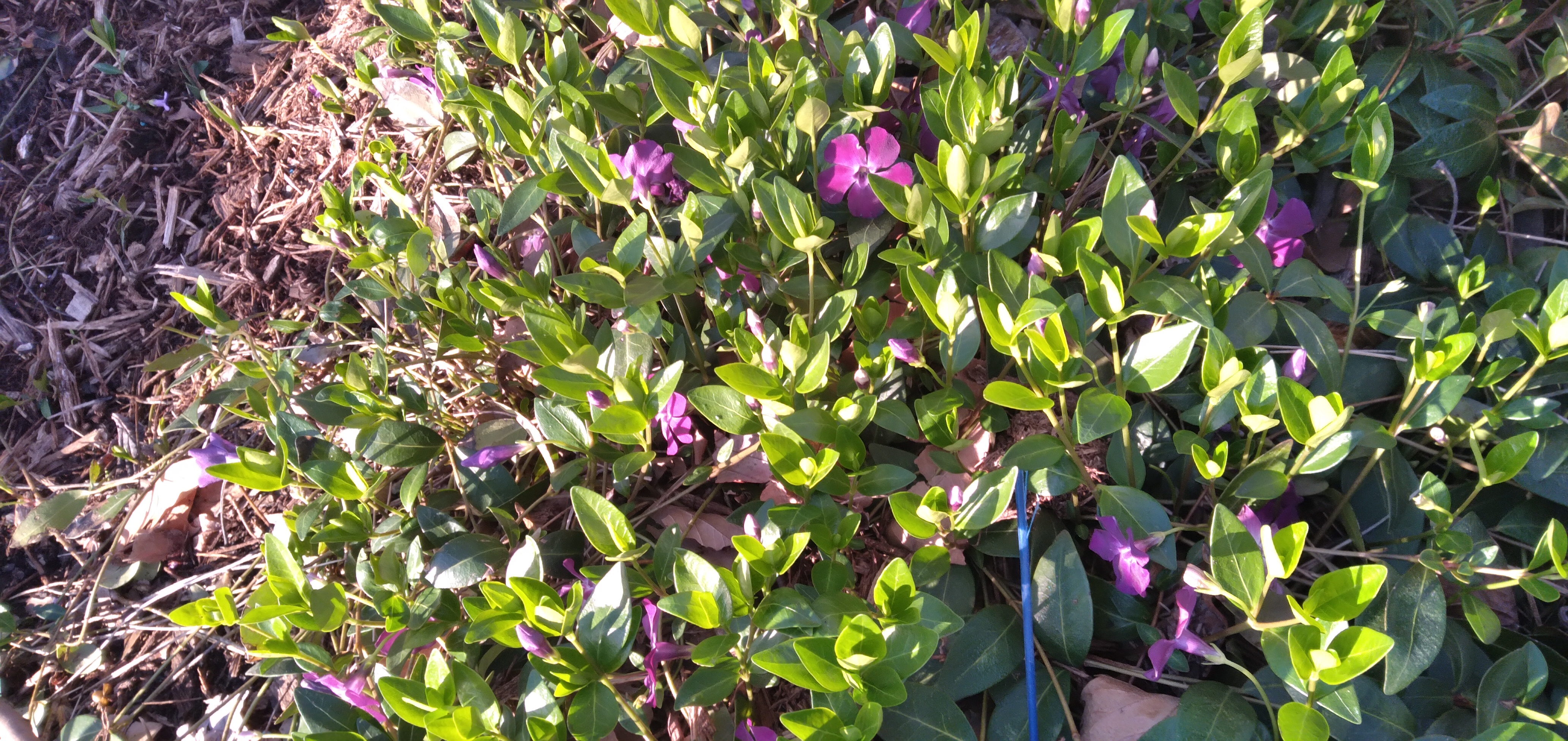
Photo: A. Prosser, NPS
Luther Ely Smith Square also utilizes Vinca minor (Lesser Periwinkle) as a ground cover. This non-native has a very dense growth habit, can grow well in shade, and is studded with beautiful purple flowers. It became popular in the Americas after European colonists brought it across the ocean with them. While this plant’s thick growth is great at preventing weeds from sprouting up, it can easily overstep its bounds and smother desirable plants as well. For this reason Vinca minor is considered invasive in certain places. Our gardeners take care to prevent this plant from spreading beyond its desired confines here at the park.
3. Eastern Redbud, Cercis Canadensis. Blooming all over the grounds.
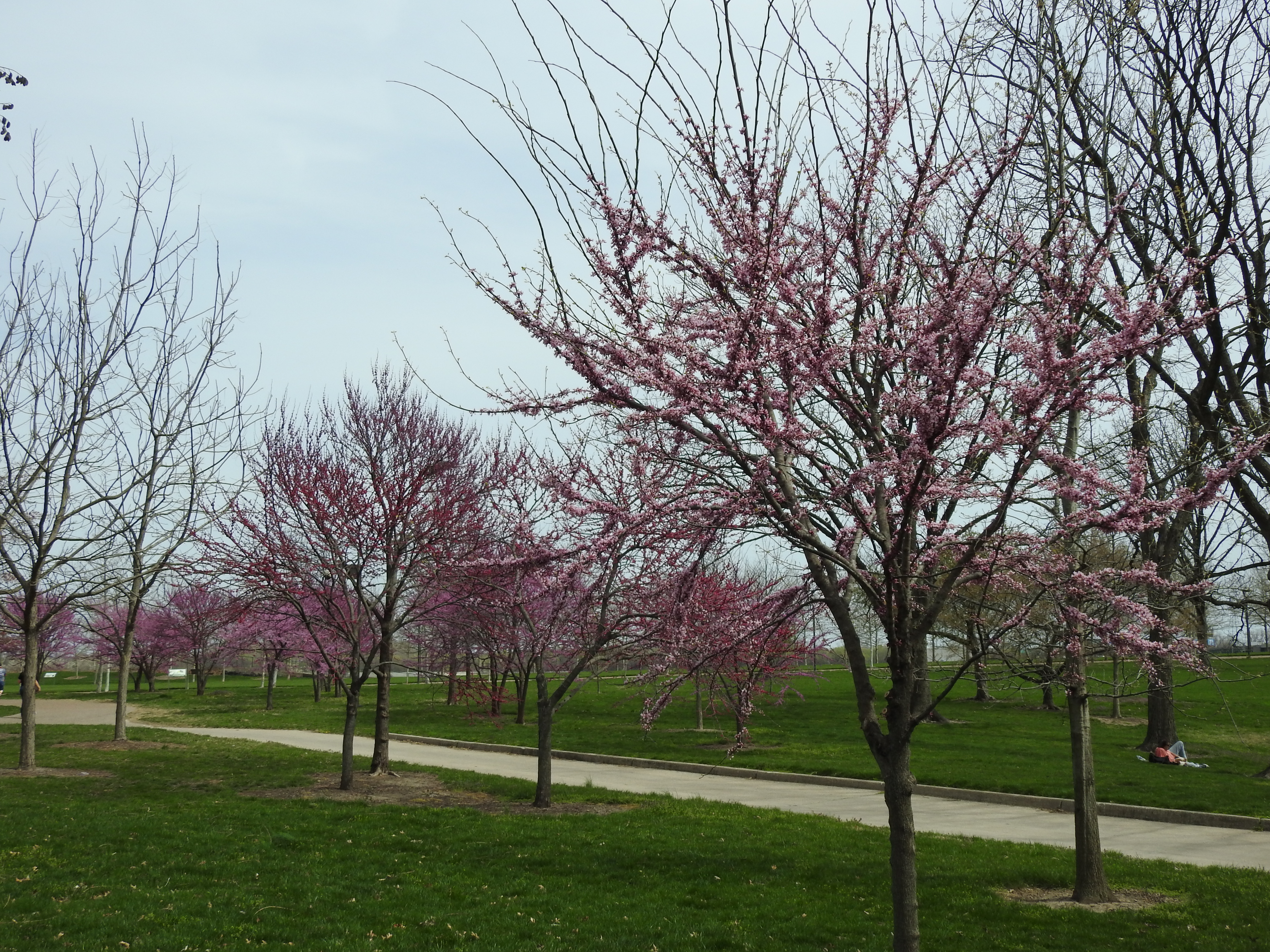
Photo: D. Reissing, NPS
Dozens of these trees are putting on a stunning display all over the park. Redbuds are native to this region. In many Eastern forests, they can be found as an understory plant. Because they are native, local insects and birds have evolved to utilize them. Caterpillars, butterflies, hummingbirds, and many bird species have been observed feeding on the leaves, blossoms, nectar, and seeds. Similar to the magnolia trees that are also blooming right now, redbuds display their flowers on bare stems before their leaves grow in.
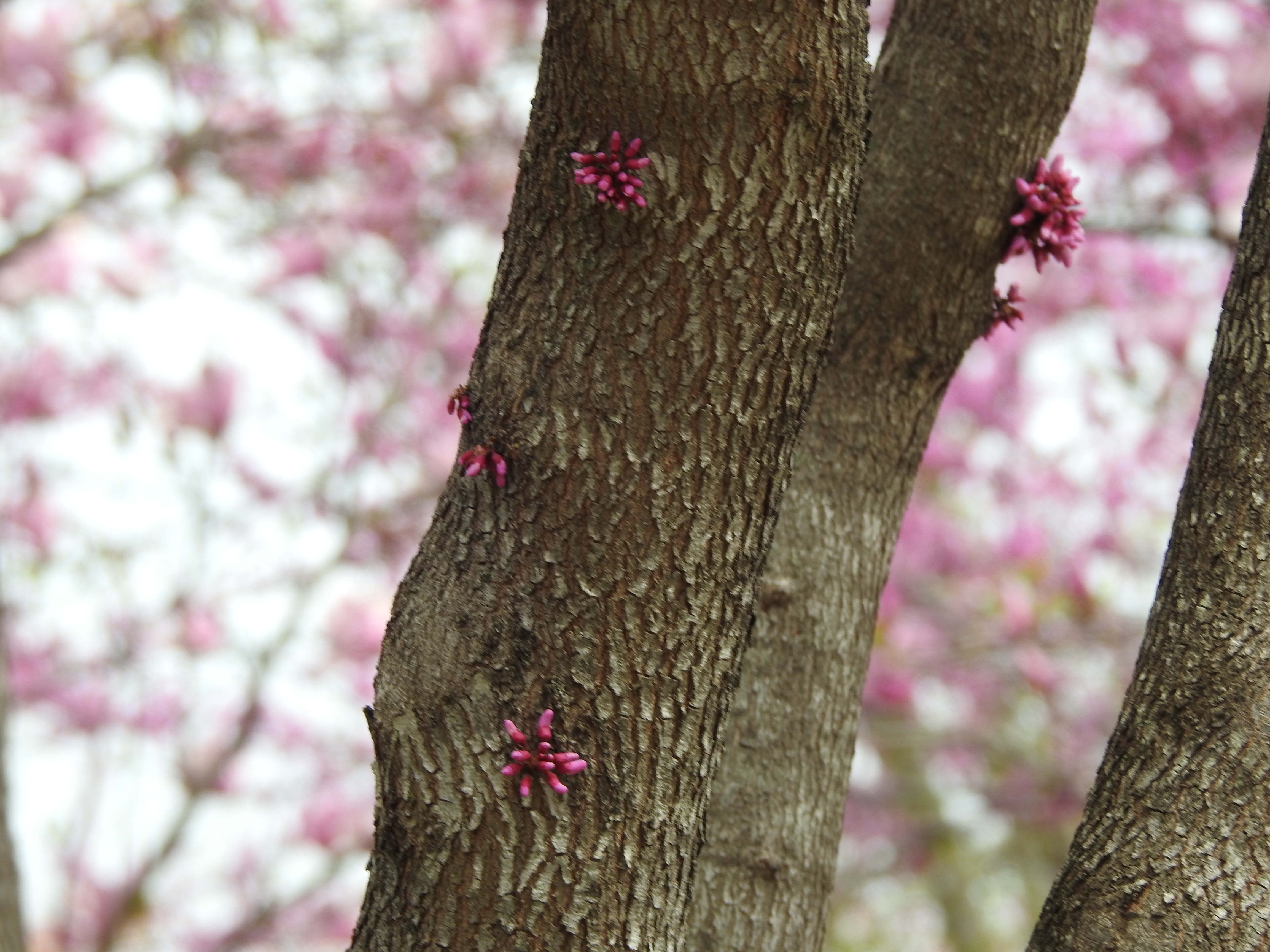
Some redbuds bloom so prolifically that buds form on their trunks as well as their branches, a phenomenon known as cauliflory. NPS Photo.
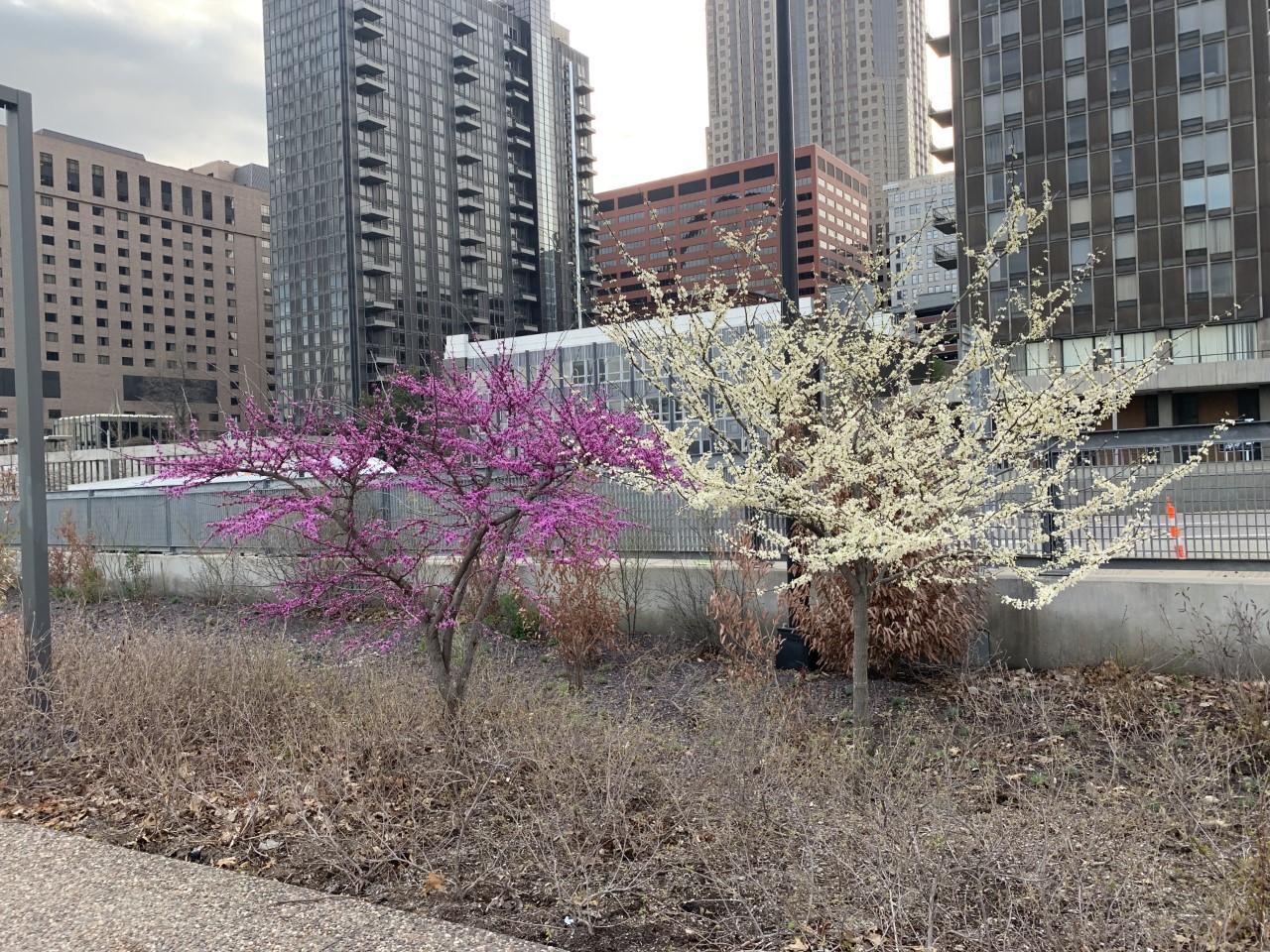
Both Cercis canadensis (standard Eastern redbud) and the white cultivar Cercis canadensis alba are represented here. These two redbuds are located on the walkway on the northwest end of the park. NPS Photo.
4. Magnolias (Various species). Blooming in many locations, especially around west main entrance.
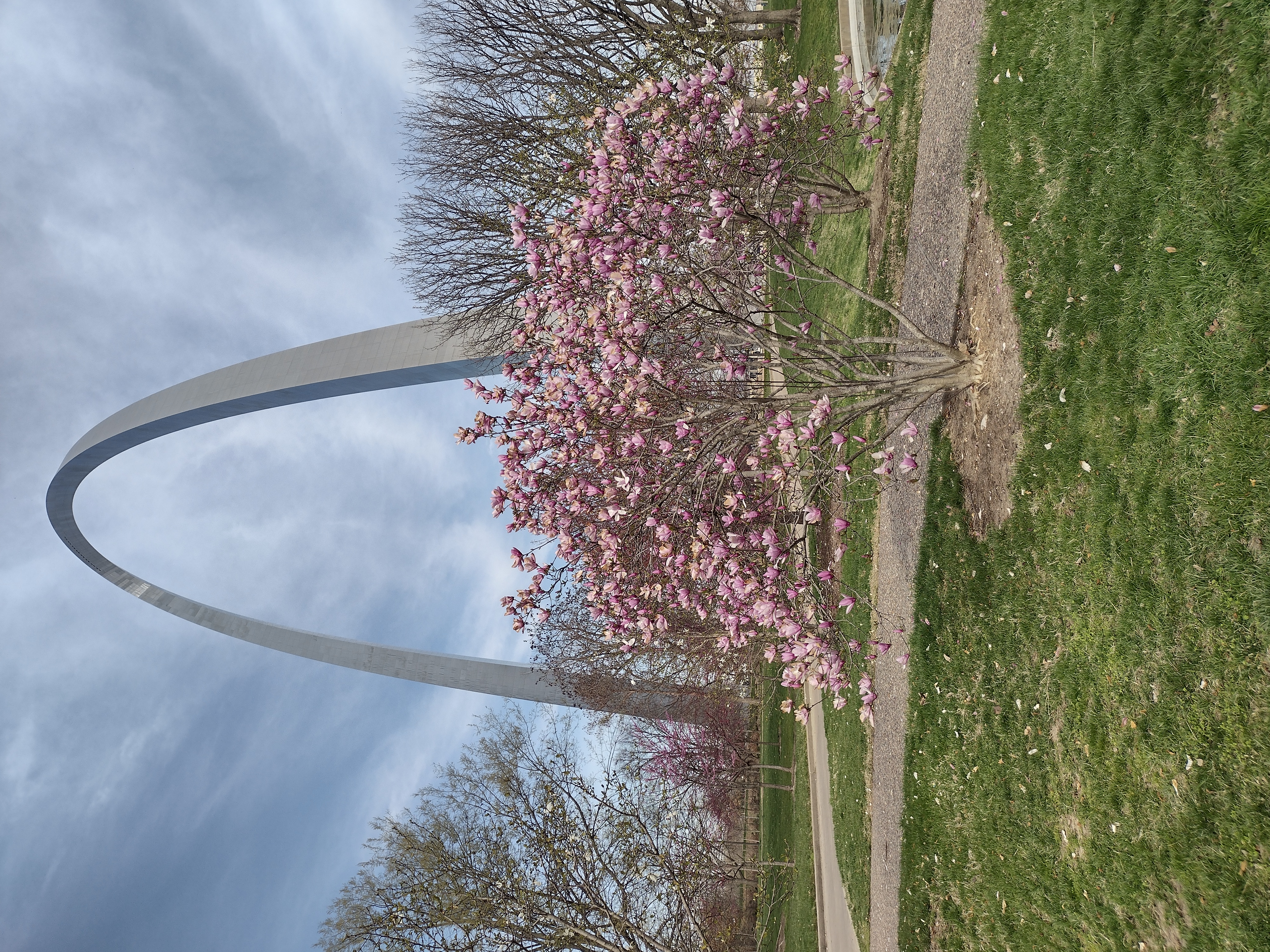
Photo: D. Reissing, NPS
We covered magnolias pretty extensively in the last blog post, so I won't rehash it here...but they're still here and still gorgeous!
5. Spicebush Species (Lindera bezoin and Lindera glauca var. salucufolia). Many individuals along the walkways on the north end of the park, and in Smith Square.
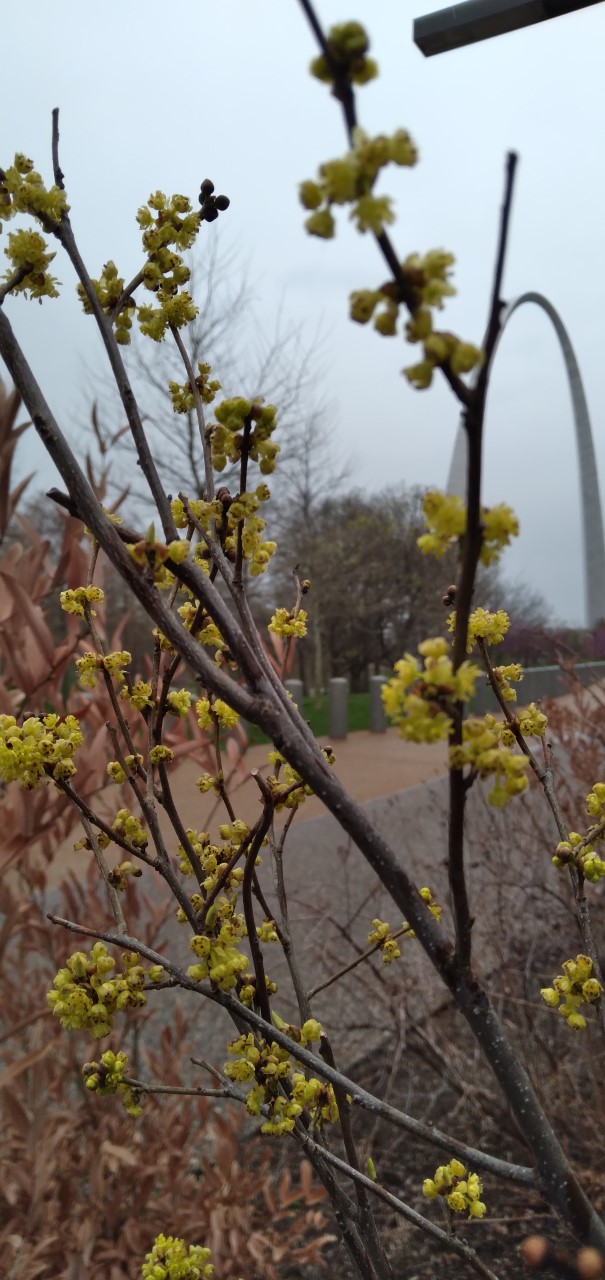
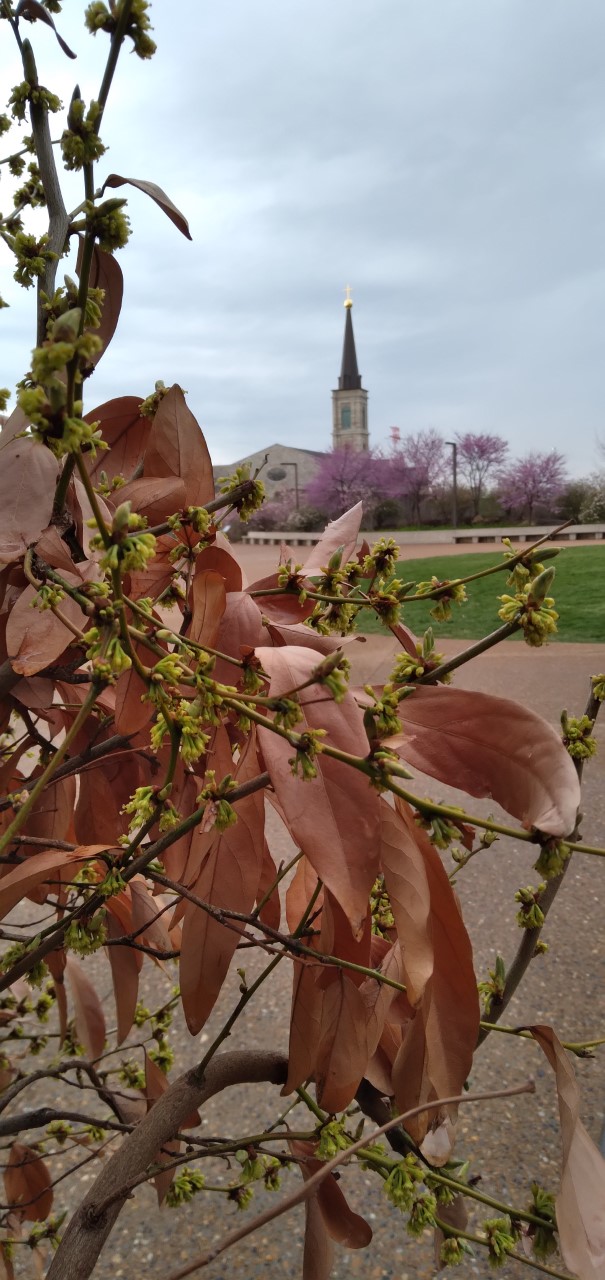
Both photos by A. Prosser, NPS.
Two kinds of spicebush are blooming: The native Lindera bezoin (left photo above) and the asian non-native Lindera glauca var. salucufolia (the photo on the right). As you might guess by the name “spicebush”, the leaves and stems of both species are fragrant when crushed. The native Lindera bezoin is a host plant for Spicebush swallowtail caterpillars, which our gardeners have observed feeding on this plant along Memorial walkway. In the fall, the caterpillars will have turned into butterflies, and the flowers will have turned into fruits that are prized by birds.The Lindera glauca var. salucufolia looks very similar to the Lindera bezoin, but the glauca is still holding on to last year’s leaves (as of this writing). The L. glauca will also produce fruit in the fall, but since this plant is non-native, fewer birds can eat the fruits. No local insects feed on Lindera glauca var. salucufolia.
6. Burkwood Viburnum (Viburnum × burkwoodii). Mostly around west main entrance, and the walkway on the northwest end of the park.
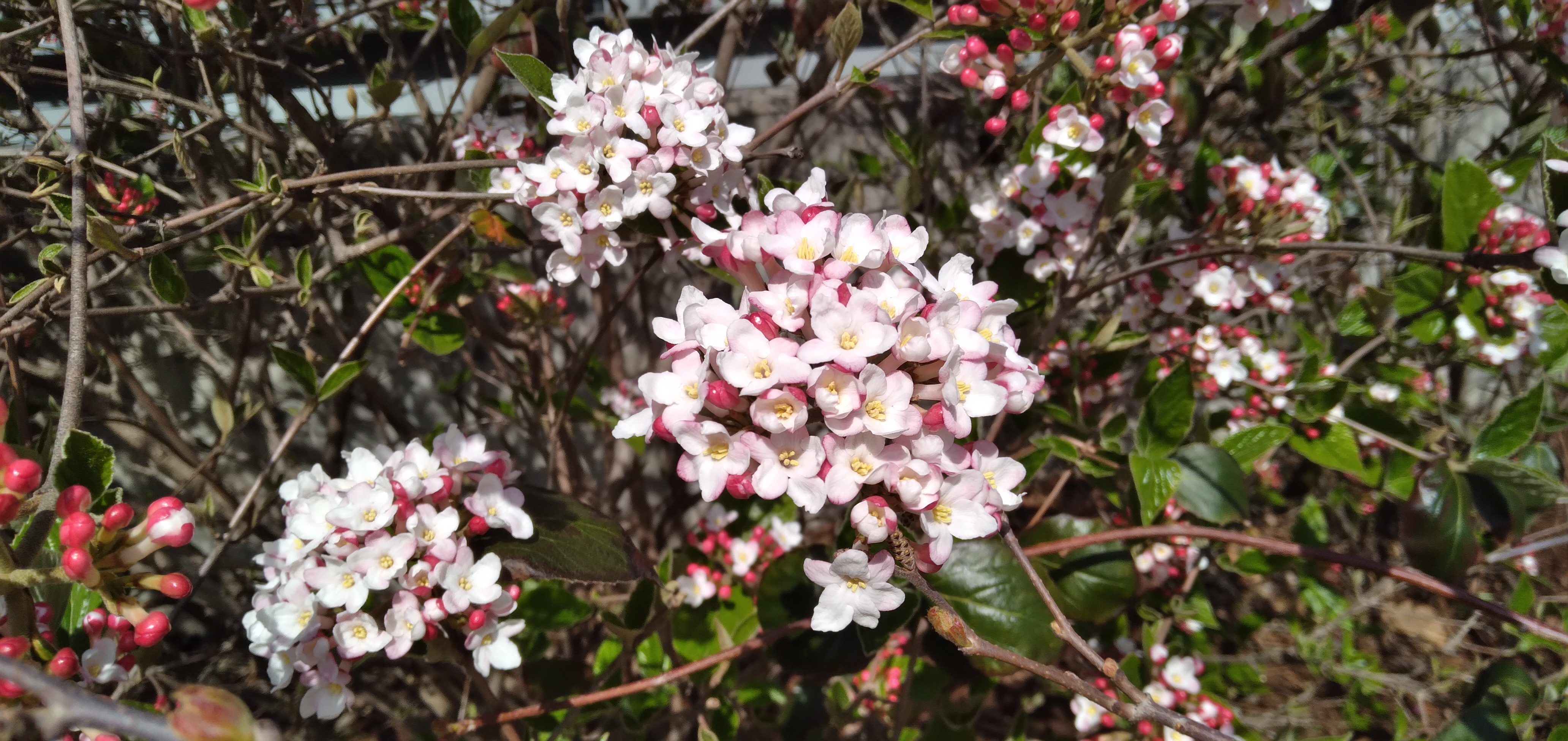
Photo: A. Prosser, NPS
If you see this bush on your next visit, lean in for a sniff – the lush flower balls are extremely fragrant, often compared to baked sugar. This species is a hybrid cross of two non-native viburnums, so native insects do not feed on it, but birds do use its evergreen leaves as cover. There are several specimens planted along the west walkways and at other locations throughout the park.
7. Redspire callery pear. A couple specimens planted near Old Cathedral.
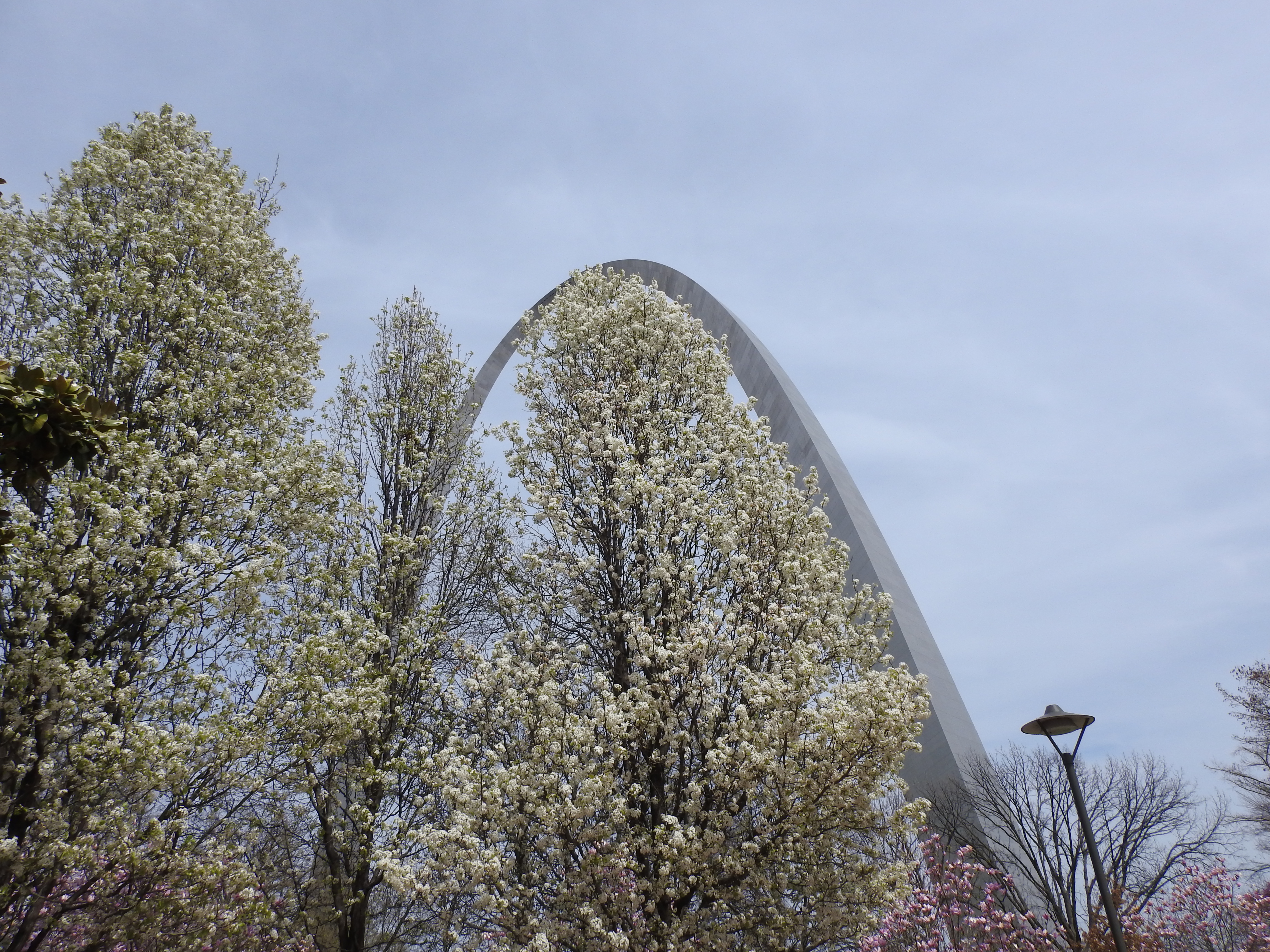
NPS Photo
Although these tall, showy, impressive trees look sweet and inviting, we advise visitors not to put their noses into the blossoms to take a whiff; they smell like rotting fish! This is because in their native China, Vietnam, and Korea, the species evolved to attract flies, which are their primary pollinators.
This plant is strikingly beautiful and grows well in our urban conditions. However, it comes with some drawbacks. Since it is so hardy, it has become invasive in certain places. Additionally, the branches are weak, so the tree is prone to limb loss. It also does not survive long. Although the tree is in the pear family, its fruits are not considered edible to humans – they are tiny, filled with cyanide-containing seeds, and rock-hard until the first frost.
8. Sassafras, Sassafras albidum. Planted on slopes by Grand Staircase.
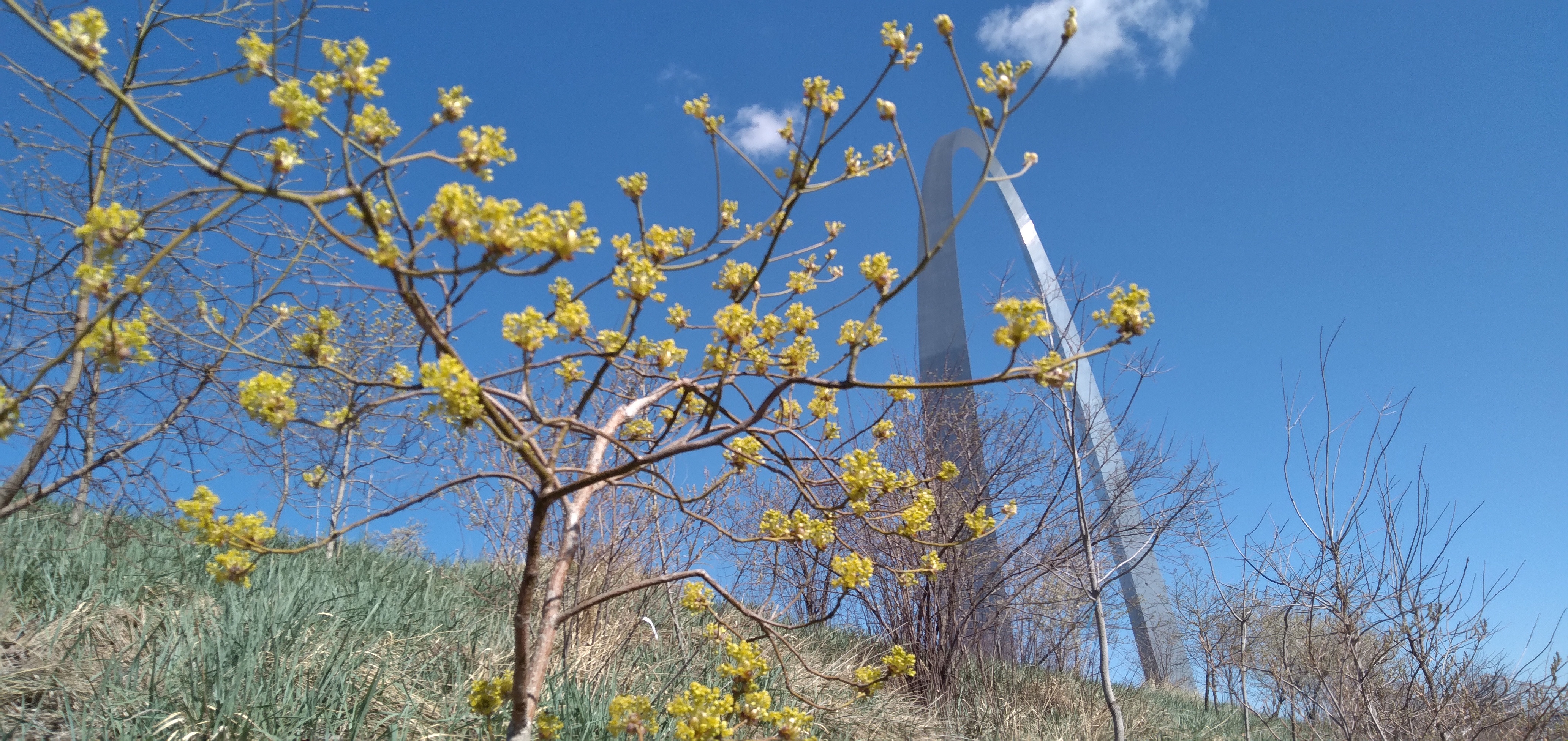
Photo: A. Prosser, NPS
Many of our visitors may have heard of Sassafras, but few would be able to identify it. Luckily, it’s easy to recognize right now on the slopes next to the Grand Staircase due to its large, strange blossoms.
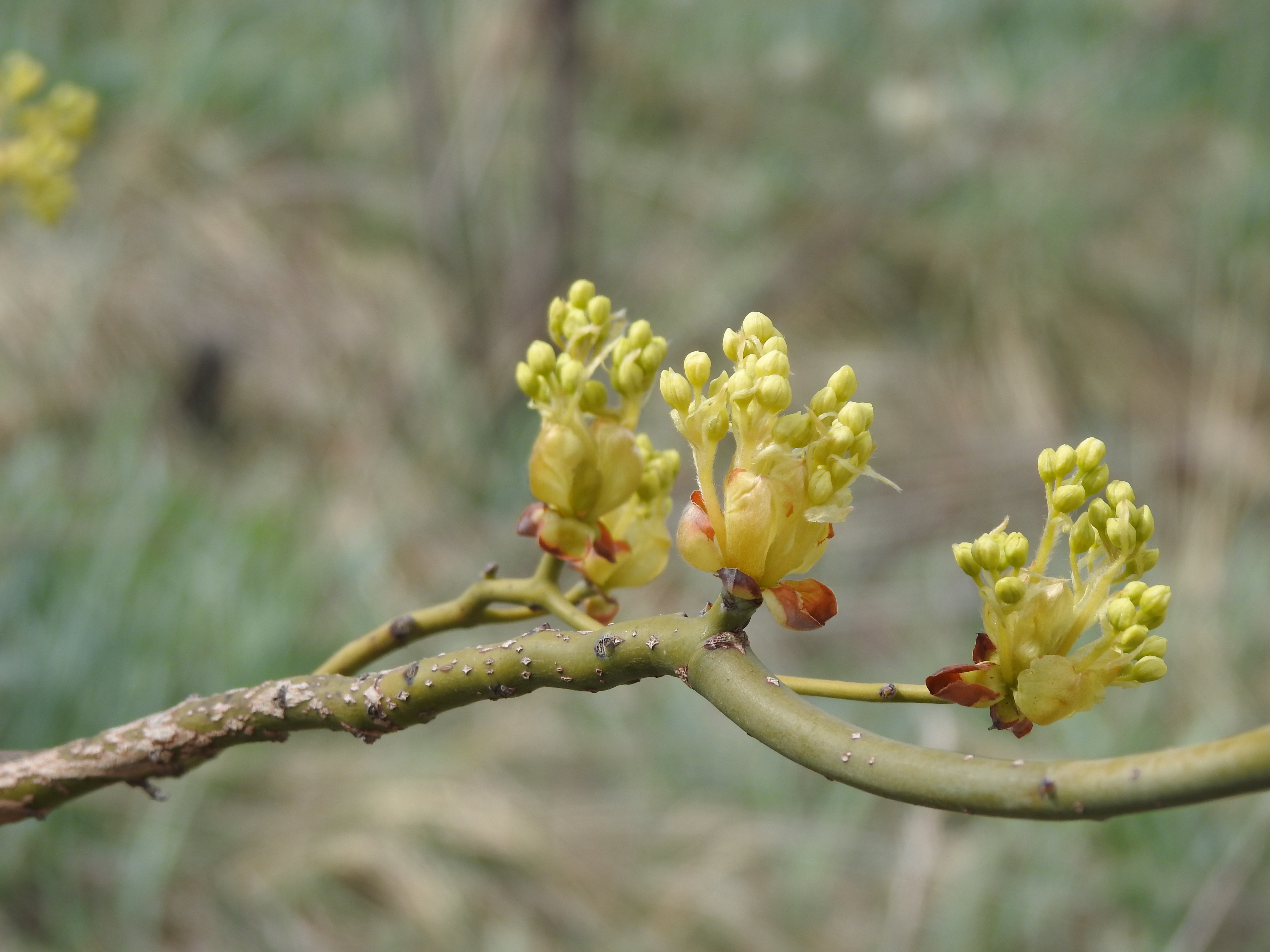
Photo: B. Michel, NPS
Oils from this tree’s roots were historically used as a medicine (it was thought to be a cure-all and thus shipped to Europe in the 1500s) and later it was used to flavor root beer. Since recent studies have shown that sassafras root is mildly carcinogenic, commercial root beer manufacturers now use artificial flavorings. The leaves of the tree are also important to humans. When dried and pounded, the leaves become filé powder, which is an important ingredient in gumbo.Since the tree is native to this region, it supports many caterpillar species, as well as bees, flies, and moths. Female trees will produce dark blue fruits in the fall. These fruits are enjoyed by local bird species.
9. 'Autumn Brilliance' Serviceberry, Amelanchier x grandiflora. Planted on slopes by Grand Staircase.
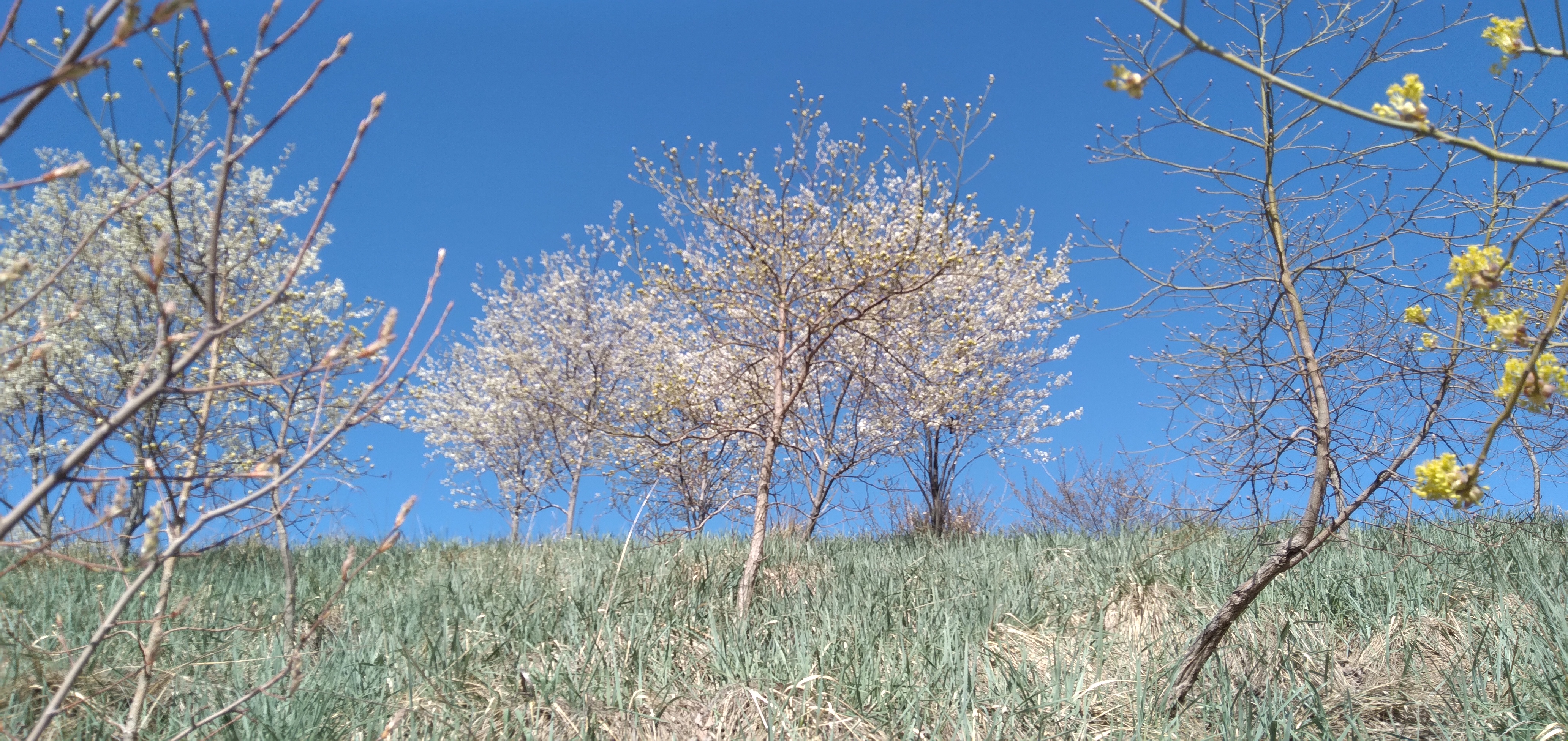
Photo: A. Prosser, NPS
If you think the serviceberry trees are impressive now, we agree – their small, pinkish-white flowers are very pretty. But for this species, things will keep getting better over the next few months. In June, the flowers will disappear and delicious blue-black fruit will come in; this is why the species is also called Juneberry. Juneberries taste a bit like blueberries. In autumn, after the fruit is gone, this tree continues to deliver. The leaves change color beautifully, as you might expect from the cultivar name ‘Autumn Brilliance’.
That's it for now! Thank you for taking the time to visit the blog. We hope to see you at the park soon. Check in near the beginning of May for the next post. By then, we should have some nice plants coming up in the North Gateway gardens.
